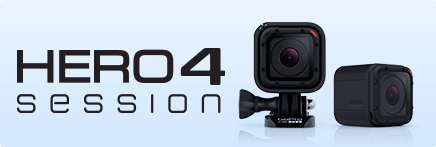GoPro – A Platform Worth $3 Billion

The GoPro Camera Platform utilized direct network effects to grow its user base, while utilizing indirect network effects to defend against large competitors.
GoPro Camera grew its user base as a result of direct network effects, and effectively fended off well-funded competitors as a result of indirect network effects.
GoPro History:
GoPro was founded in 2001 by Nick Woodman in an attempt to provide surfers the ability to capture memories on the water. GoPro’s original product was a 35mm camera enclosed in a waterproof shell, worn using the proprietary wrist strap. The camera is GoPro’s “platform.”
Why Surfers?
Surfers usually ride in groups, and talk about their experiences when they get back to shore. With the advent of the GoPro, surfers were now able to re-live the group experience even after it ended. However, having just one GoPro wasn’t enough. As the number of surfers with GoPro cameras increased, the more vividly groups of surfers could re-live their experiences. The group was better off when their experience was captured at different angles and through different perspectives. Surfers quickly took to the GoPro, which sold over 350k worth of cameras in its first year.
Branching Out
As sales skyrocketed for surfers, GoPro began to focus on other social sports with similar network effects, such as snowboarding, biking, and skydiving. The more people in the group who used GoPro, the richer the entire group’s experience became. The direct effects increased GoPros revenues four times, to $36 million, from 2008 to 2009.
Platform Improvement
GoPro invested heavily in improving their platform. They moved from 35mm cameras to digital in 2007, introduced the wide angle lense in 2008, moved to HD in 2010, and ended with 4k resolution in 2013.
As the number of users grew, and the platform improved, GoPro increased its value added to manufacturers of GoPro “accessories” and “mounts.” Additional mounts such as the helmet, car, and bike mount, allows users to utilize the GoPro platform in a variety of sports and activities. Accessory and mount manufacturers had a large user base to sell to, which incentivizes them to develop a variety of products. To date, there are over 88 accessories you can purchase for your GoPro platform.
Defending Against Competition
Due to the large variety of accessories and mounts, users are more inclined to use GoPro than the competitor. Along the way, several large and well funded competitors, such as Cisco, attempted to steal market share from GoPro. At the time Cisco came in (2009), GoPro already had many users and many manufacturers for their platform, making it very difficult for the “FlipCam” to succeed. Other competitors, such as Sony’s Action Cam have appeared more recently, with little success. Again, the GoPro platform maintains its success due to the indirect and direct network effects that GoPro has been utilizing since 2001.
In order for a competitor to truly succeed against GoPro, they will need to utilize a lot of capital re-creating both sides of the GoPro platform. To date, we see no competitor even come close. GoPro has recently gone public, with a valuation of approximately 3 billion USD.



Jonathan,
Enjoyed reading your post as I wrote about GoPro for the last blog post. I agree there are some network effects through users and accessories, which has driven expanded categories of use and further network growth. I wonder, though, how sustainable their growth is. The action sports category is limited and they seem to be approaching market saturation (at least US). It will be interesting to see how their hardware evolves over time and they can capture new applications for their hardware. Certainly, they will succeed in continuing to make the form factor lighter and smaller, but how many users will chose to upgrade their old GoPros which are still, for the most part, doing the job?
While they have succeeded in keeping competitors away, I worry about new takes on this technology. Garmin, well known for GPS devices and wearables, produces a waterproof HD action camera called the Virb XE, priced similar to GoPro, but adds sensors to track heart rate, GPS, acceleration and orientation. While maybe not catching on yet, I think their technology is compelling. Garmin also has a diverse balance sheet and perhaps more resources to dedicate to R&D the space, plus experience in wearables. Time will tell.
Matt